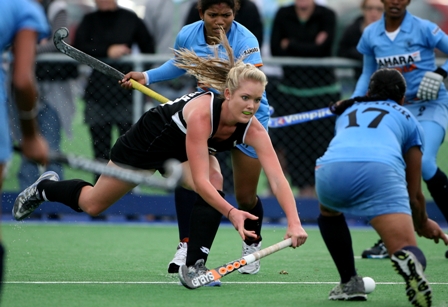OLYMPIC STAT: How India’s Olympic fortunes fell drastically on synthetic turf
OLYMPIC STAT: How India’s Olympic fortunes fell drastically on synthetic turf
Share
K. ARUMUGAM
Numbers don’t lie if properly understood. A solid example of this truism is the numbers associated with India’s Olympic history which this article wishes to address.
India has taken part 21 out of 24 times that field hockey has been staged in the Summer Olympics. India has also established a veritable heritage by winning medals 11 times – 8 gold, 1 silver and 2 bronze.
The performance figures are encouraging. India has won 77 out of 126 matches in the Games (1928 to 2016), drawn 17 which means it lost 32. Overall, the figures paint a rosy picture.
However, it’s important to note how these numbers work in modern times, which in hockey’s context pertains to the last four decades and a half starting with the introduction of synthetic turf grounds that replaced natural grass at the 1976 Montreal Olympics.
Separating the figures into two categories, i.e., performance in the natural grass and artificial turf eras gives us a clear picture, even though it’s nothing but two extremes. Such categorization of data in fact provides a clear perspective as to where Indian hockey stands now.
We noted that India suffered 32 defeats. It’s noteworthy that the bulk of those losses were sustained during the artificial turf era. To make it clear, India have lost only four matches between 1928 to 1972 but lost 28 out of 68 matches on synthetic pitches (1976 to 2016).
Similarly, India has scored 433 goals at the Games. Splitting this figure over two different types of surfaces provides an interesting insight. About 62 percent of the goals were scored in the natural grass era although India played 10 fewer matches after the advent of artificial turf. India played 58 matches between 1928 and 1972 and 68 between 1976 and 2016.
This indicates a significant reduction in the number of goals India scored on artificial surfaces.
To accentuate the point, India’s performance against the same nations on plastic and grass is worthy of analysis. India beat some countries easily in the grass era but struggled or even could not beat them at all on synthetic pitches.
For instance, India beat The Netherlands six times out of seven on grass, the other being a draw. However, on artificial turf, India has lost to their famous rivals four out of five times.
It’s a similar case with respect to several other top nations, especially Germany and Australia.
While India did not lose to Germany on grass (won 5 out of 6, with one draw), it lost 4 out of 7 times on synthetic pitches with three matches drawn.
Belgium lost all matches to India on grass but reversed the trend on artificial pitches. New Zealand won just one match against India on grass but has a 100 percent record over the former giants on artificial turf.
The duo’s record against India in the artificial turf era, therefore, evokes respect.
Clearly, one image that emerges on spreading the data surface-wise is that India lost ground with the introduction of synthetic pitches. Or it was any case of waiting to happen? Its subject for some other occasion.
This may be due to its inability to adopt to the new surface and all the parameters that it demands like fitness, stamina, endurance along with physical and mental strength. Western goalkeepers, taller and stronger, also emerged match-winners in their own right.




